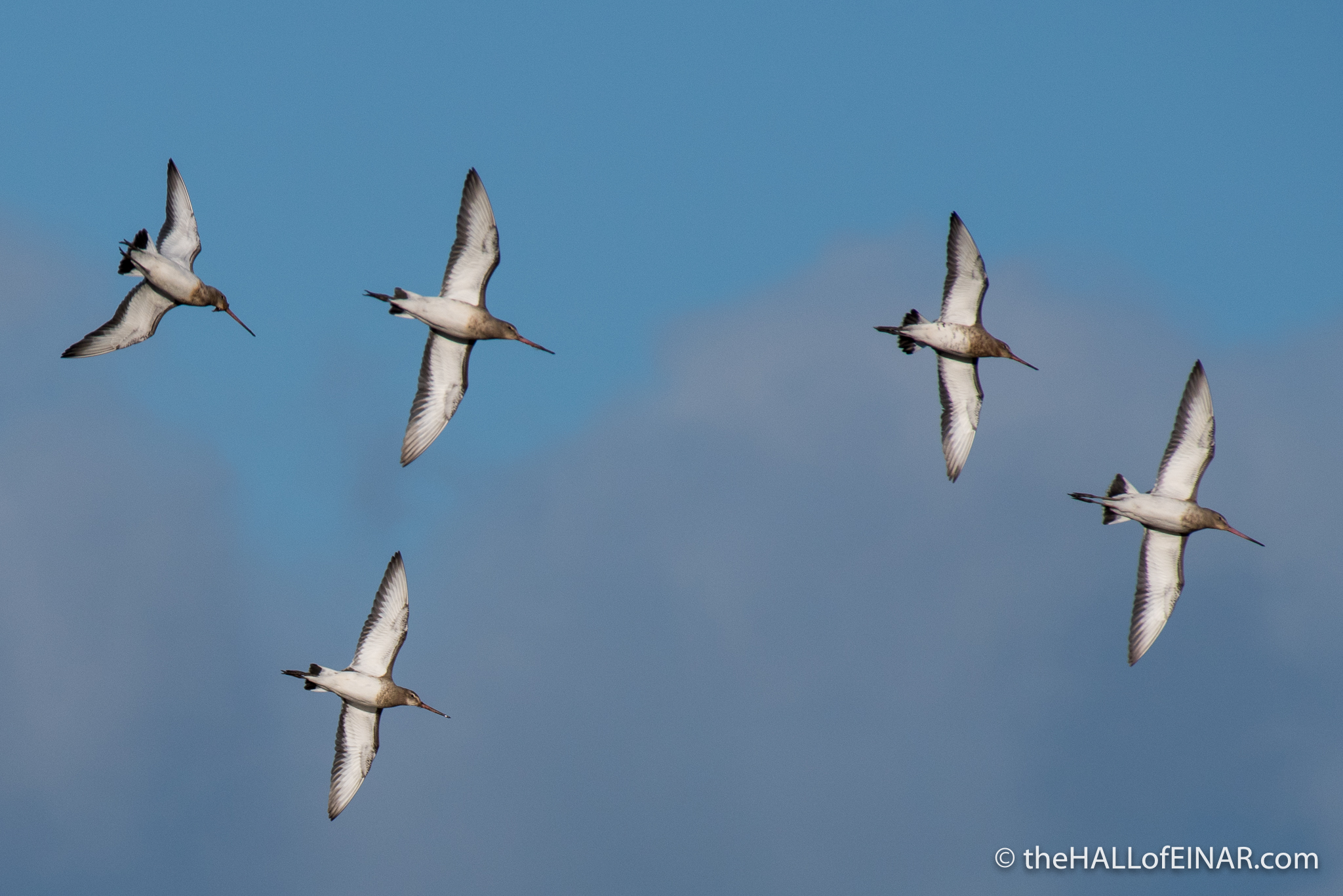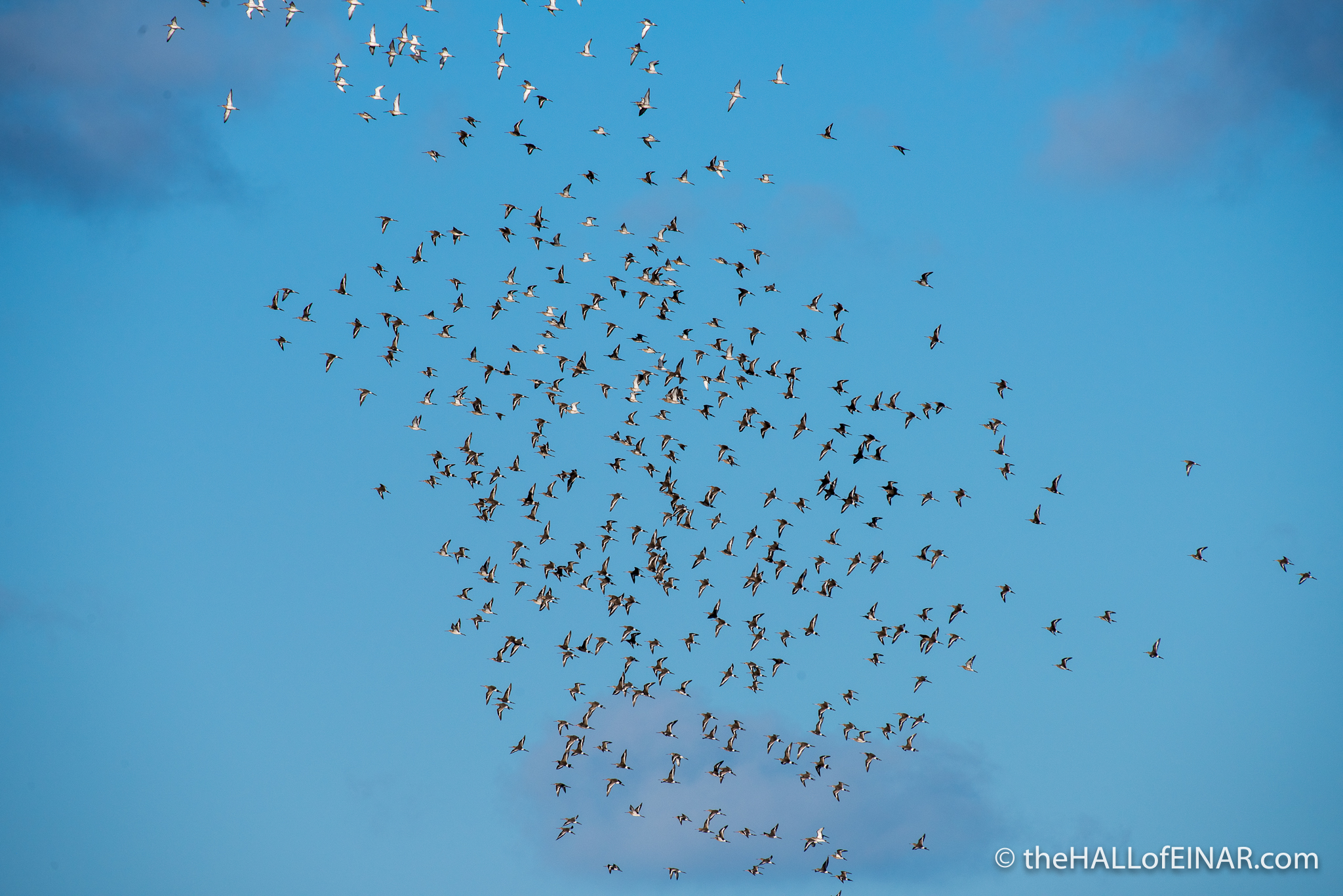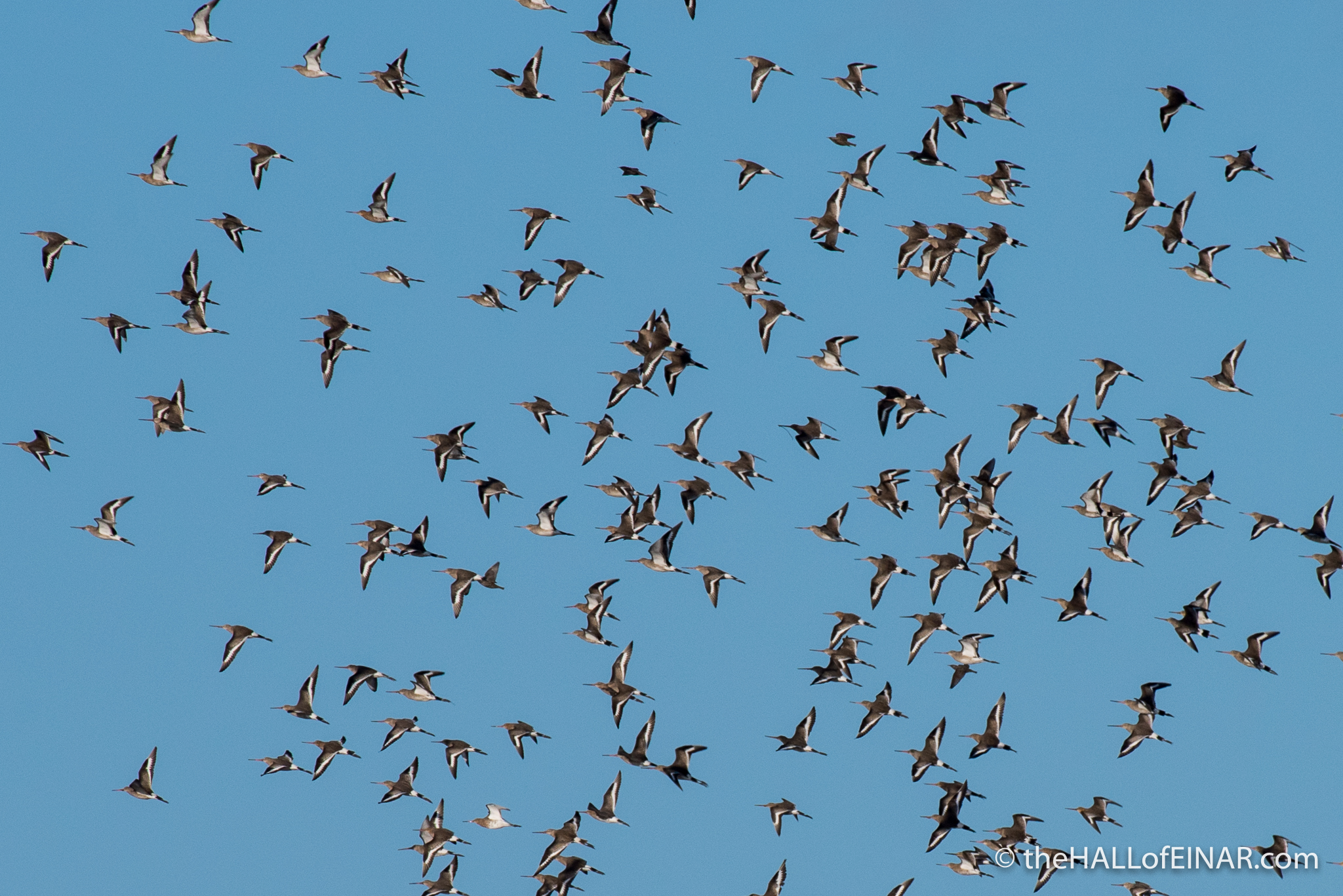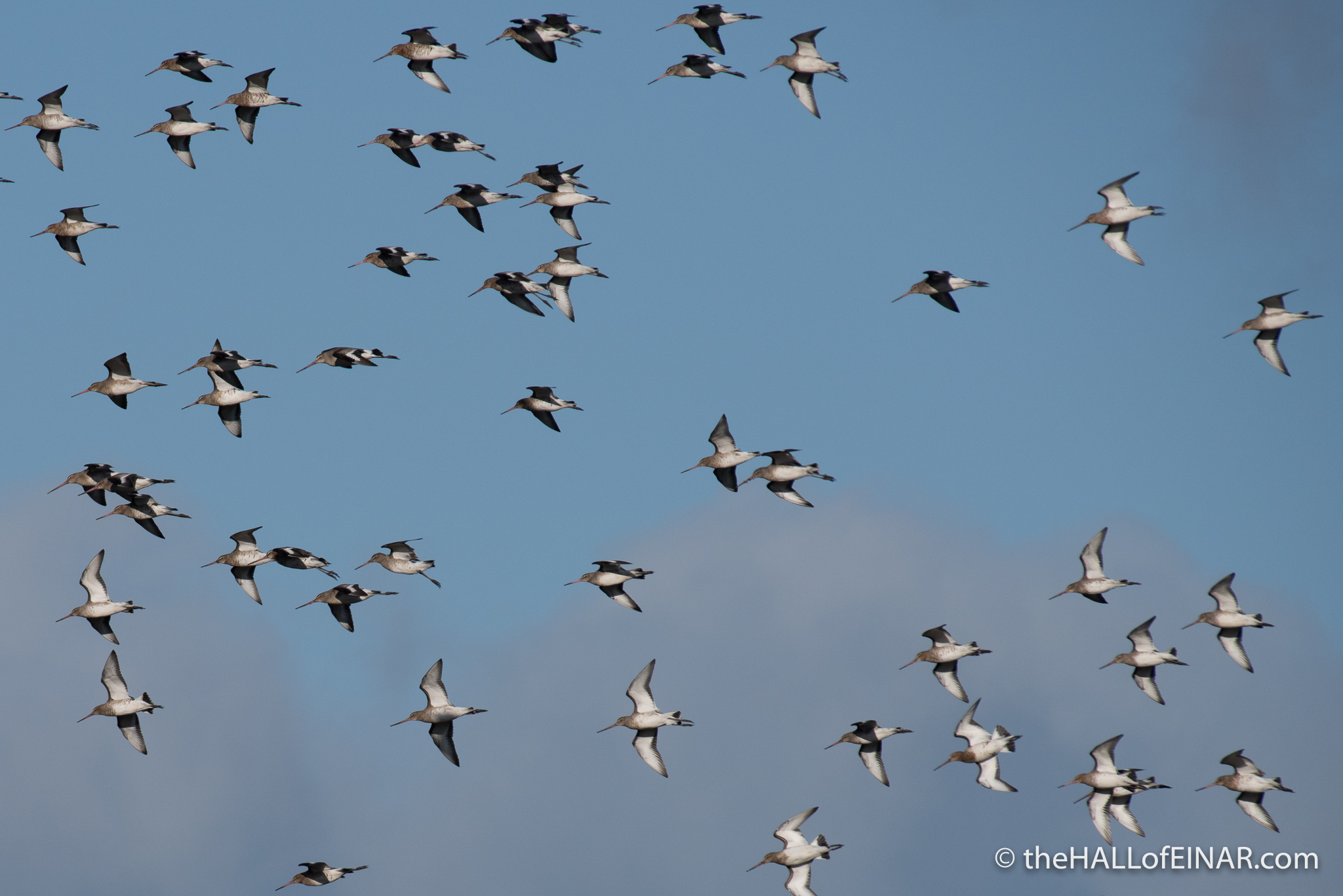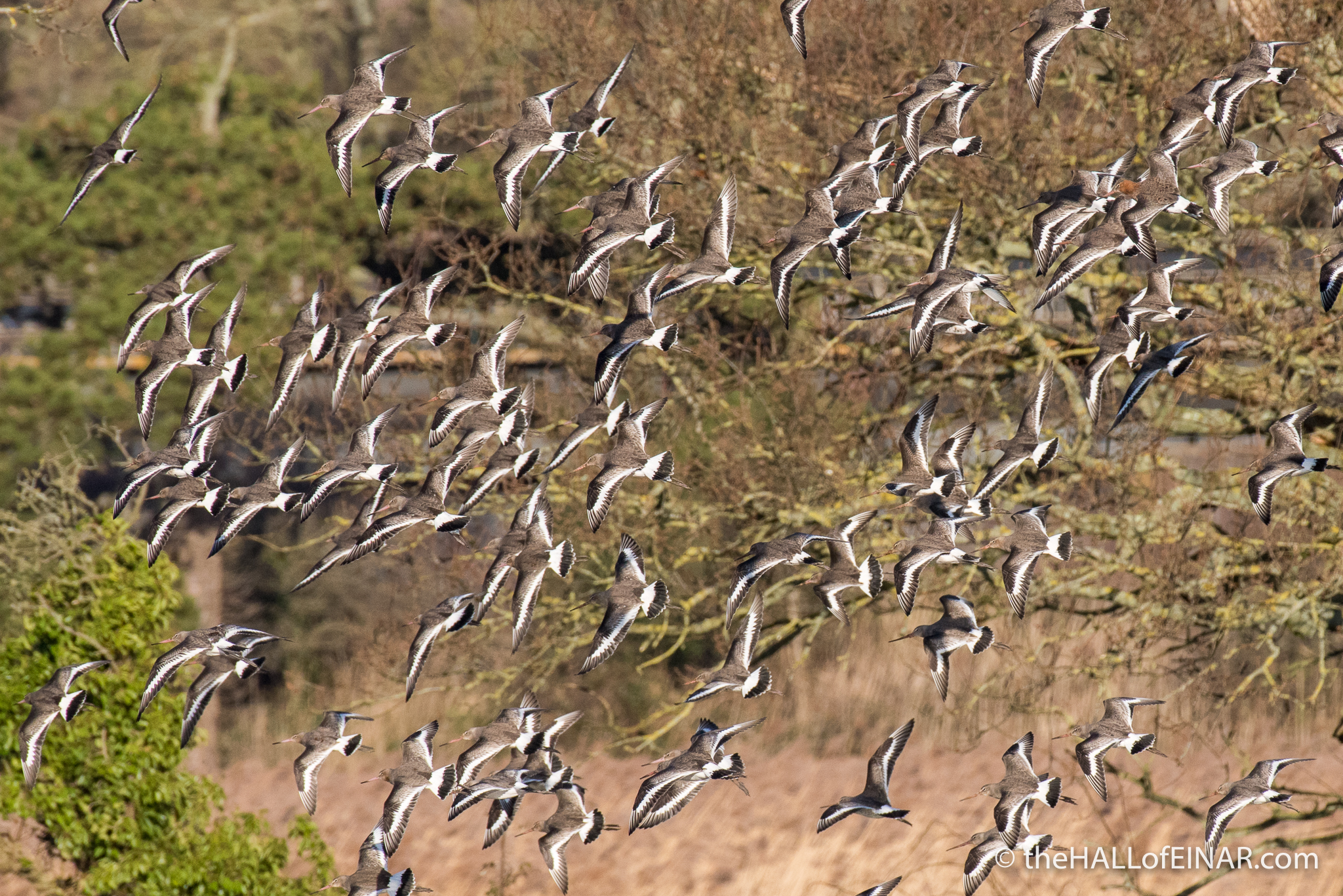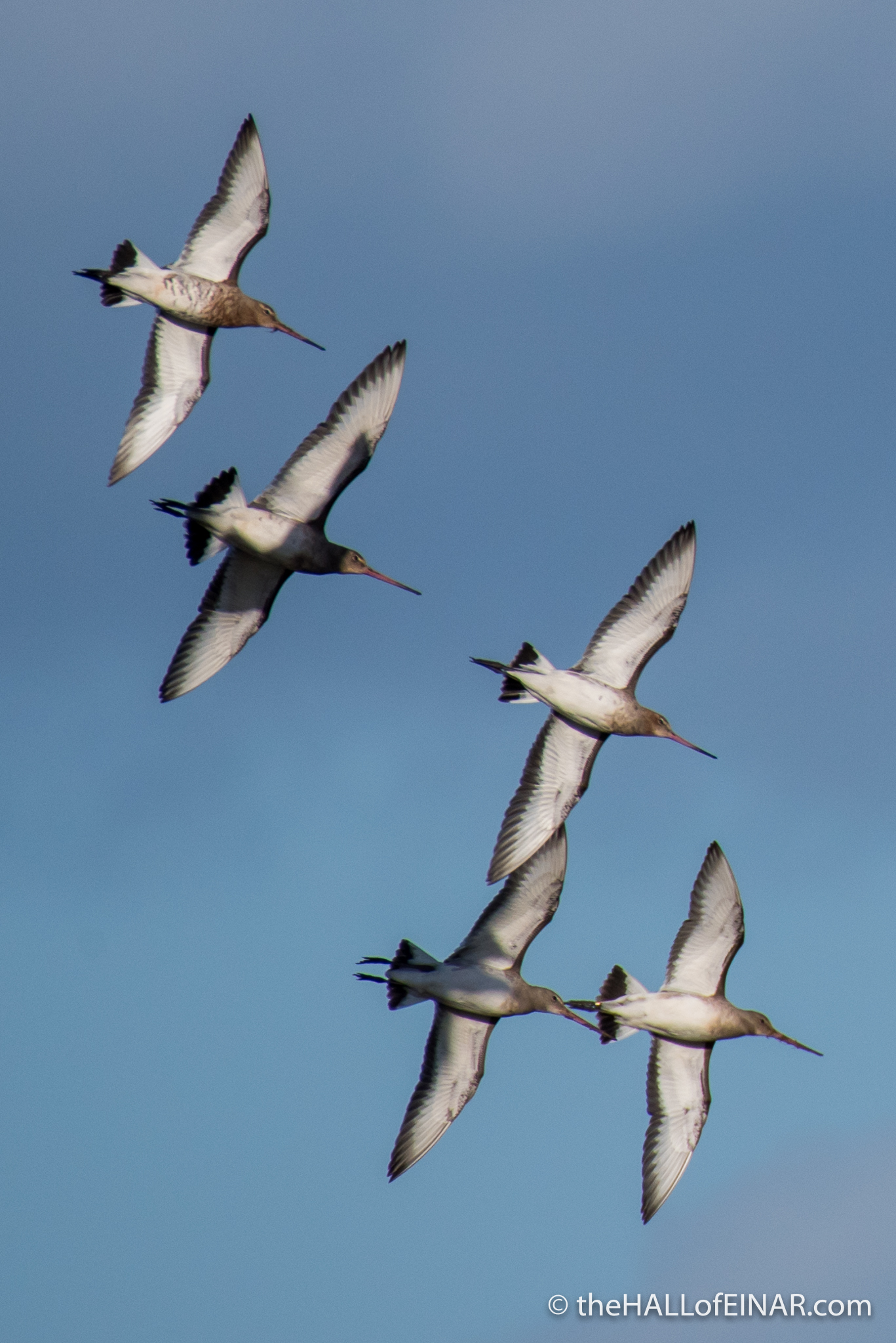Black-Tailed Godwits on the Exe
There are large flocks of Black Tailed Godwits on the Exe estuary at the moment. It’s winter and they’re probably here from Iceland, because Iceland is a bit icy at the moment:
Their scientific name is Limosa limosa. Limus is Latin for muddy. Muddy muddy; what a great name. Their flocks make amazing shapes across the fields:
They have really distinctive white bars on their wings:
They are yet another globally threatened species which is ‘red listed’ in the UK as a species of conservation concern. Black-Tailed Godwits are still hunted in France where they kill 6,000 to 8,000 birds every year.
The flocks are confusing against the colours of trees and fields. I can imagine a predator trying to catch one being very disorientated by their flashing wings and wheeling flight:
In summer they change colour completely with adult males developing a brighter orange-red breast than the female. There’s just the one in the middle of this flock.
Black-Tailed Godwits mate for life and spend the winter apart, often hundreds of miles from each other. In summer they time their arrival at their breeding grounds precisely as they have very little patience; if their partner is more than three days late they will breed with another bird instead.
Let’s hope these are all on time.
